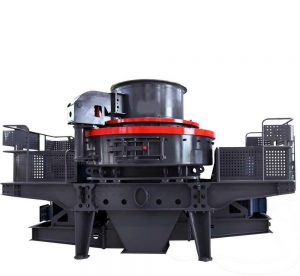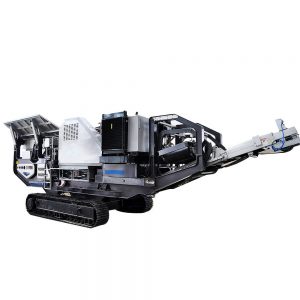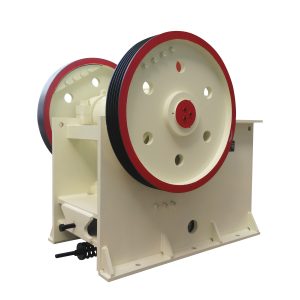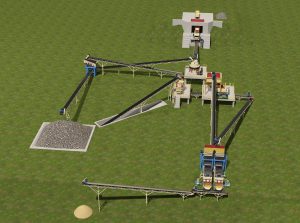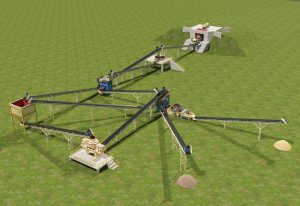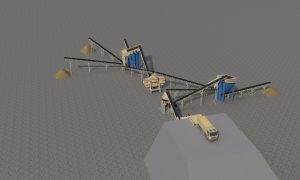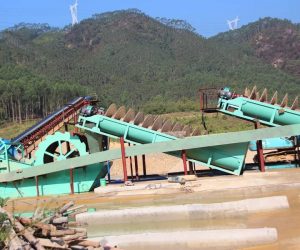How to Process Beach Sand into Construction Sand?
Beach sand, with its fine texture and abundant availability, is often considered a valuable resource for various construction projects. However, utilizing beach sand directly in construction is not always feasible due to impurities and variations in size. This blog will guide you through the process of transforming beach sand into usable construction sand, detailing the steps involved, the equipment required, and the benefits of this practice.
What is Beach Sand?
Beach sand is primarily composed of finely granulated minerals, predominantly quartz, which has been naturally weathered and eroded over time. This sand is typically finer and more rounded than other types of sand due to the action of ocean waves and wind. While its aesthetic appeal makes it popular for recreational purposes, its properties can vary significantly based on location.
- Composition: Mostly quartz, but may contain other minerals such as feldspar, shell fragments, and volcanic rock.
- Texture: Generally finer and smoother due to natural weathering processes, making it less suitable for certain construction applications without processing.
- Color: Can range from white to tan or gray, depending on mineral content and the presence of impurities.
While beach sand has its advantages, it often contains organic materials, salt, and impurities that negatively affect the concrete’s quality and structural integrity. Therefore, processing beach sand into construction sand is essential for achieving the desired properties.
Process Beach Sand into Construction Sand
The transformation of beach sand into construction-grade sand involves several key steps:
Collection of Beach Sand
Site Selection: Choose a beach area with minimal contamination and high-quality sand. Areas with less human activity and fewer pollutants are ideal.
Permits: Ensure you have the necessary permits for sand extraction, as many locations have regulations governing the collection of beach sand to protect ecosystems.
Collection Method: Use shovels, buckets, or small excavators to collect sand, ensuring minimal disturbance to the environment. It’s crucial to avoid over-extraction to preserve the natural habitat.
Washing the Sand
Purpose: This step removes salt, organic matter, and other impurities that can weaken construction materials.
Equipment Needed:
- Sand Washer: A machine designed to wash sand, usually consisting of a rotating drum or a bucket wheel.
- Water Source: Access to a consistent water supply is essential for effectively washing the sand.
Process:
- Place the collected beach sand into the sand washer.
- Introduce water to the washer, allowing it to agitate and separate impurities from the sand. The agitation helps in dislodging dirt and organic materials from the sand particles.
- Rinse thoroughly until the water runs clear, indicating that most impurities have been removed. This stage is critical, as leftover salt can lead to corrosion in concrete.
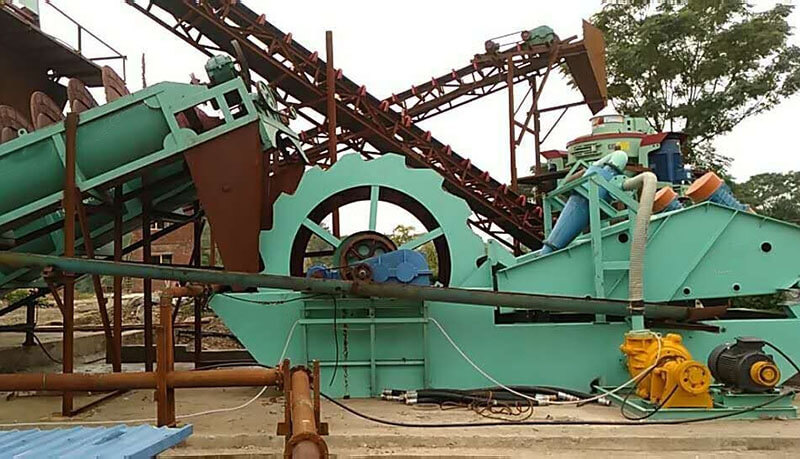
-
Drying the Sand
Purpose: Removes excess moisture from the sand, making it suitable for construction use. Wet sand can adversely affect the mixing ratios in concrete and other applications.
Equipment Needed:
- Drying Beds: Flat, open areas where sand can be spread out to dry naturally. This is an energy-efficient method but depends on weather conditions.
- Industrial Dryers: For larger operations, rotary dryers or fluidized bed dryers can speed up the drying process.
Process:
Spread the washed sand evenly over-drying beds or feed it into industrial dryers.
Monitor moisture levels to ensure the sand is adequately dried. Regular checks can prevent delays in the construction schedule.
-
Screening the Sand
Purpose: Ensures uniformity in particle size, which is crucial for construction applications. Consistent grain size enhances the strength and stability of concrete mixtures.
Equipment Needed:
Vibrating Screen: A machine that separates sand based on size using vibrating screens with varying mesh sizes. This equipment can efficiently sort sand into different grades.
Process:
- Feed the dried sand into the vibratory screen.
- Adjust the screens to separate fine, medium, and coarse particles. This step allows for the customization of sand grades.
- Collect the desired grade of sand for construction use while discarding any oversized or undersized particles. Accurate screening is vital for ensuring the sand meets construction standards.
-
Quality Control
Purpose: Ensures that the processed sand meets industry standards for construction materials. Quality control is essential to maintain the integrity of construction projects.
Testing Methods:
- Sieve Analysis: To check the grain size distribution. This analysis confirms that the sand meets the acceptable limits for construction use.
- Moisture Content Testing: To confirm dryness. Excess moisture can lead to problems.
- Chemical Composition Analysis: To ensure the absence of harmful substances like salts, which can degrade concrete over time.
Process:
- Conduct regular testing during and after processing to maintain quality standards. Implementing a consistent testing schedule can help identify any issues early.
- Adjust processing methods based on test results to achieve optimal sand properties. Flexibility in operations allows for better quality management.
-
Storage and Distribution
Purpose: To prepare the sand for delivery to construction sites efficiently. Proper storage prevents contamination and ensures the sand retains its quality.
Equipment Needed:
- Storage Silos or Bins: To store processed sand and prevent contamination. Keeping the sand in a controlled environment is crucial.
- Conveyor Belts: For efficient transportation of sand from processing to storage areas.
Process:
- Store the processed sand in clean, dry conditions to avoid recontamination. Proper sealing of storage units can help maintain the quality.
- Use conveyor belts for loading into trucks or delivery vehicles, streamlining the distribution process.
Equipment for Processing Beach Sand to Construction Sand
Investing in the right equipment is crucial for efficient processing of beach sand. Here are some essential machines you’ll need.
- Excavators and Loaders: For collecting and moving sand. These machines can significantly speed up the collection process.
- Sand Washers: To wash and separate impurities from sand. Choosing a high-efficiency washer can improve output quality.
- Industrial Dryers: For removing moisture from washed sand. This equipment is important in humid climates.
- Vibratory Screens: To classify sand by size. Ensure the screens are adjustable to accommodate different project specifications.
- Testing Equipment: For quality control, including sieves and moisture meters. Regular calibration of testing equipment is essential for accurate results.
- Storage Containers: To keep processed sand safe and clean. Proper storage is vital to maintain the sand’s integrity until it reaches the construction site.
Benefits of Using Processed Beach Sand in Construction
Utilizing processed beach sand provides several advantages for construction projects:
- Cost-Effective: Beach sand can be an economical alternative to mined sand, especially in coastal areas. This can lead to significant savings in transportation and resource costs.
- Sustainability: Reduces the need for inland sand mining, helping to preserve local ecosystems. Sustainable practices are becoming increasingly important.
- Quality Control: Processing ensures the removal of impurities, resulting in higher-quality construction materials. This leads to fewer structural issues over time.
- Versatility: Suitable for various applications including concrete, mortar, and asphalt production. Processed sand can meet the diverse needs of construction projects.
Conclusion
Processing beach sand into construction-grade sand is a valuable practice that not only provides a sustainable source of materials but also ensures quality for construction projects. By following the outlined steps and utilizing the right equipment, you can effectively transform beach sand into a usable product while adhering to environmental regulations. As the demand for construction materials continues to grow, understanding and implementing these processes will be crucial for future developments in the industry.
Eastman is a professional mining equipment manufacturer with 38 years of rich experience in the mining construction industry. We can also provide lab equipment. Welcome to consult our professional team to get factory prices. According to your situation and product requirements, we will design a complete sand-crushing production line flow chart and provide an accurate quotation.
